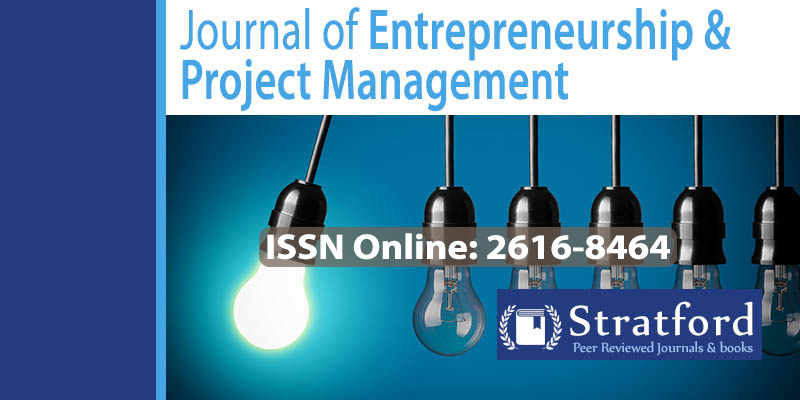Community Engagement; An analysis of Performance of Donor Sponsored Projects in Low Resource Countries
DOI:
https://doi.org/10.53819/81018102t5358Abstract
Donor-sponsored projects complement government efforts in addressing developmental needs in communities, particularly economic empowerment and employment creation. Despite these interventions, communities in low-resource countries often remain impoverished, with some worse off than before project implementation. The desired outcomes frequently go unrealized, resulting in poor value for donors' investments. A critical but underexplored relationship exists between community participation and project performance, with community engagement serving as a vital component throughout the project cycle. Development stakeholders, including governments and donor consortiums, increasingly emphasize community participation as a prerequisite for project initiation. Western donors have expressed concern about project performance related to their sponsorship. This paper analyzes studies on community participation by different scholars, employing a systematic approach. From 122 articles identified through Google Scholar and Zotero, 25 were synthesized, and five most relevant articles were thoroughly examined. The analysis reveals that community participation is imperative for the success of donor-funded projects in low-resource countries. Participatory techniques positively impact project sustainability, with participatory planning and design influencing implementation effectiveness. The study emphasizes that successful approaches integrate participatory needs assessment, planning, implementation, and evaluation. The paper recommends strengthening of community participation in donor-funded projects, right from their inception to project closure and handover. Emphasis should be directed to community members’ commitment as they participate in the project cycle. The adequacy of project inputs, availability of community groups’ formation, capacity building, and level of acceptance, awareness, and resource provision should also be enhanced. Community people or beneficiaries have to be included in all phases of project development. The community also have to be trained on participatory practices in development involvements. Proper communication should be enhanced as a recommendation through the project management cycle as well clear distribution of roles for all stakeholders within water management.
Keywords: Community Engagement, Performance, Donor Sponsored Projects, Low Resource Countries
References
AinulJaria, M. (2011). Access to public participation in the land planning and environmental decision-making process in Malaysia.
International Journal of Humanities and Social Sciences, 1(3), 148-164. Public Law Department, International Islamic University Malaysia.
Bartholomew, L., Parcel, G. S., Kok, G., Gottlieb, N. H., & Fernández, M. E. (2011). Planning health promotion programs: An intervention mapping approach (3rd ed.). Wiley.
Bell, E. (2010). Research for health policy. Oxford University Press.
DeFilippis, J., Fisher, R., & Shragge, E. (2010). Contesting community: The limits and potential of local organizing. Rutgers University Press.
Hassan, A. N., Muturi, W., & Samantar, M. S. (n.d.). Factors influencing active community participation in local development projects: A case of JPLG Project in Garowe, Puntland State of Somalia.
Henderson, P., & Vercseg, I. (2010). Community development and civil society: Making connections in the European context. The Policy Press. https://doi.org/10.46692/9781847428592
Kadurenge, B. M., Nyonje, R. O., Onguko, B. B., & Ndunge, D. K. (2016). The evolving nature of community participation in public development projects in Kenya: A literature review. International Journal of Humanities and Social Science, 6(9), 31-38.
Lelegwe, L. S. (2015). Influence of community participation on community ownership of donor-funded projects: A case of Saidia, Samburu County, Kenya. Humanities and Social Sciences.
Lelegwe, L. S., & Oketch, T. C. (2016). Community participation in donor-funded projects in the pastoral communities. International Journal of Economics, Commerce and Management, 4(9). http://ijecm.co.uk/ ISSN 2348-0386
Makori, J. O., & Wanyoike, D. (2015). Assessment of result-based monitoring and evaluation of the performance of donor-funded value chain projects in Kenya (Doctoral dissertation, JKUAT).
Marsland, R. (2006). Community participation in the Tanzanian way: Conceptual contiguity or power struggle? Oxford Development Studies, 34(1), 65-79.
Massawe, F. A., & Chumbula, J. J. (2018). Community participation in water resource projects management in Iringa District Council, Tanzania. https://doi.org/10.1080/13600810500496053
Mugenda, O. M., & Mugenda, A. G. (2003). Research methods: Quantitative and qualitative approaches. Acts Press.
Mutimba, M. (2013). Determinants of sustainability of donor-funded projects: The case of selected projects in Ganze Constituency in Kilifi County, Kenya (Master’s thesis, University of Nairobi).
Narayan, D. (1995). The contribution of people’s participation: Evidence from 121 rural water supply projects. ESD Occasional Paper Series No. 1. World Bank.
Ndungu, J., & Karugu, J. (2019). Community participation and performance of donor-funded youth projects in Korogocho, Nairobi City County, Kenya. International Journal of Current Aspects, 3(3), 227-240. https://doi.org/10.35942/ijcab.v3iIII.42
Noori, H. (2017). Community participation in the sustainability of development projects: A case study of the national solidarity program Afghanistan. Journal of Culture, Society and Development, 30.
Oakley, P., & Marsden, D. (1999). A project with people: The practice of participation in rural development. International Labour Office.
Okech, T. C., & Lelegwe, L. S. (2016). Community participation in donor-funded projects among the pastoral community of Northern Kenya.
Phillips, R., & Pittman, R. (2009). A review of An introduction to community development. Journal of the American Planning Association, 76(4), 517–518. https://doi.org/10.1080/01944363.2010.508392
Ramisch, J. J., & Verma, R. (Eds.). (2010). Agriculture, natural resource management, and “development” beyond the biophysical.
Sirgy, M. J., Phillips, R., & Rahtz, D. (Eds.). (2011). Community quality-of-life indicators: Best cases V. Springer. https://doi.org/10.1007/978-94-007-0535-7
United Nations Development Program. (2012). Results-oriented monitoring and evaluation: A handbook for program managers.
World Bank. (2012). Guidelines for monitoring and evaluation of biodiversity projects.


